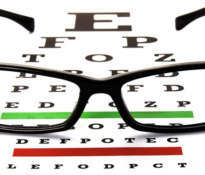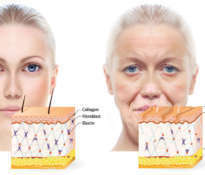Hyaluronic acid naturally occurs in the human body in the form of sodium hyaluronate. It reaches the highest concentration in the skin, in synovial fluid and in the vitreous body of the eye, but it is also a component of body fluids, connective tissue and walls of blood vessels. What is the use of hyaluronic acid and how to make up for its deficiencies?
The main function of hyaluronic acid is to bind water. Every day, the body produces about 30% of the total amount of hyaluronic acid, because such an amount breaks down every day. Over the years, the body’s ability to produce hyaluronic acid decreases and then we begin to look for methods to supplement this substance. Hyaluronic acid can be supplemented with anti-wrinkle treatments (injections, creams), dietary supplements (pills, capsules, creams) or medical treatments (injections).
Creams against aging
Reducing the synthesis of hyaluronic acid causes a reduction in the content of water in the skin, the appearance of wrinkles and visual changes, which we define as aging. There are anti-wrinkle creams that are characterized by high concentration of hyaluronic acid. Using such creams, we provide intensive hydration for aging skin, whose main problems are dryness and wrinkles. When applied to the skin, hyaluronic acid penetrates the skin surface and penetrates into the inner layers. Just like hyaluronic acid produced in the body, hyaluronic acid in the form of a cream moisturizes the proper skin starting from the deeper layers up to the outer layer.
Dietary supplements with hyaluronic acid
Some specialists say that hyaluronic acid delivered in the form of dietary supplements can not be absorbed through the digestive tract, because its molecules are too large. However, Japanese scientists have developed a technology that reduces the molecular weight of hyaluronic acid and does not change its chemical properties. Thanks to this, hyaluronic acid taken orally as a dietary supplement, penetrates the digestive system into the skin and, according to the assurances of manufacturers, this form of hyaluronic acid is also very effective.
Injections of face and neck
Injections based on hyaluronic acid are widely used in aesthetic medicine. Injections are used by people who want to remove wrinkles from the face. The preparation for filling wrinkles has the form of a flexible gel. During the procedure, the doctor inserts the substance under the skin with a thin needle. The effect of injecting hyaluronic acid is visible immediately and lasts for about a year. Hyaluronic acid used to remove wrinkles is a synthetic preparation, thanks to which it does not cause allergic reactions.
Medical treatments
Products containing hyaluronic acid are used in many medical procedures, including the prevention and treatment of symptoms associated with connective tissue diseases, such as: fractures, hernia, glaucoma, damage to the cornea and retina, osteoarthritis, prevention of scarring, failure of the vocal cords, damage to cartilage and ligaments and wound healing. Of these, osteoarthritis has recently become a particularly popular area in which hyaluronic acid is used.
Although hyaluronic acid is usually well tolerated by the body, there may occasionally be unwanted side effects. The side effect mainly concerns the injection of hyaluronic acid under the skin and it may be redness of the skin, swelling, bruising of the skin, itching at the site of injection, skin discoloration or abscesses.











